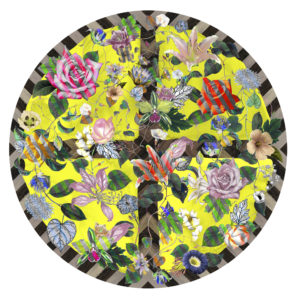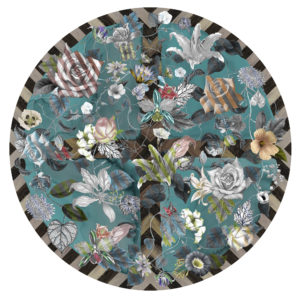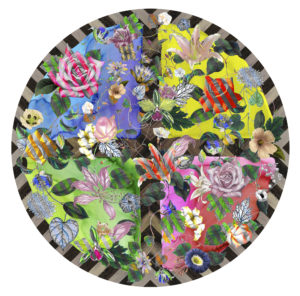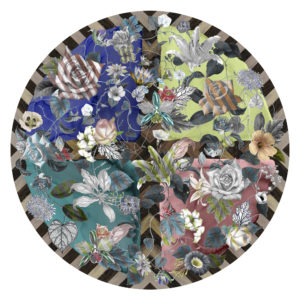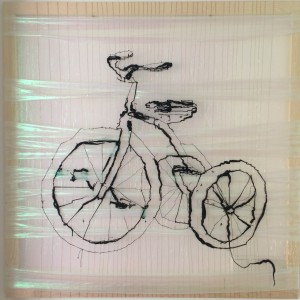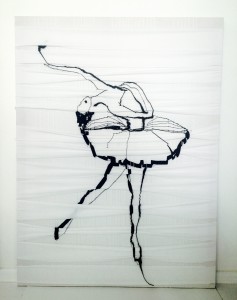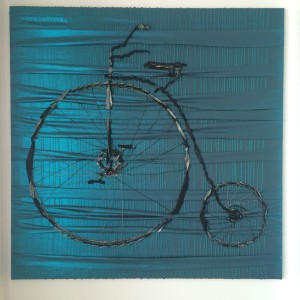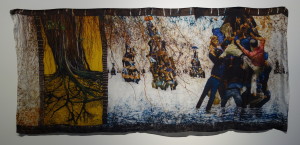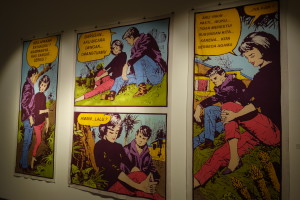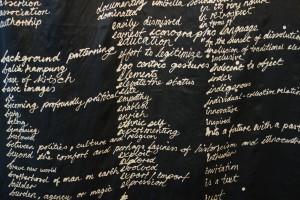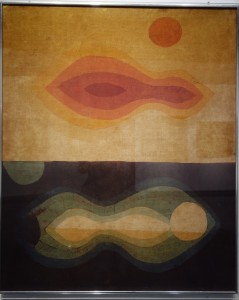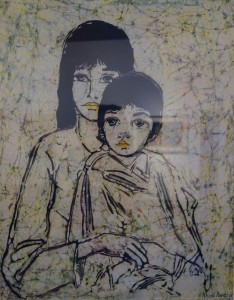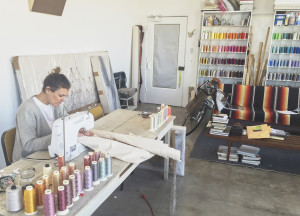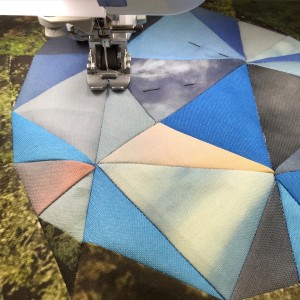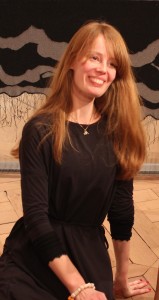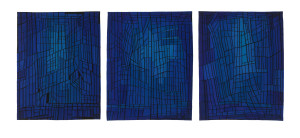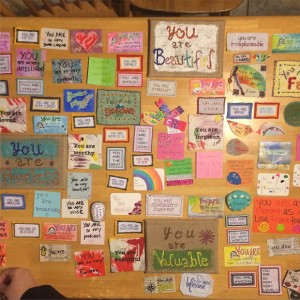
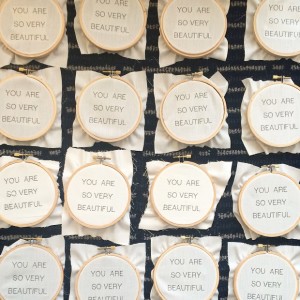
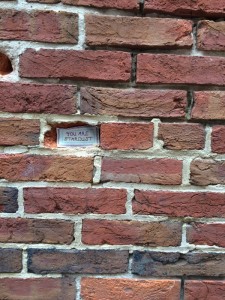
[Images courtesy of Betsy Greer and the ‘You are so very Beautiful,’ drop at Baltimore]
Definition of craftivism: ‘a way of looking at life where voicing opinions through creativity makes your voice stronger, your compassion deeper and your quest for justice more infinite’ Betsy Greer
Creating something often brings more pleasure than owning the finished piece, and now there is an outlet for all of your creativity. ‘You are so very Beautiful,’ is a project originated by Betsy Greer, the ‘godmother of craftivism.’ Make a positive affirmation no bigger than the size of your palm starting with the words ‘you are’ and send it to Betsy or find out how to create your own drop where you live.
The benefits of doing so can be two fold. Not only are you adding to a cause, but sometimes samples you weave, sew or knit for a larger piece are often redundant once they are made. Try adapting them to give you the knowledge you need for your final work then send them onto a drop to spread a little happiness. We caught up with the lovely Besty to find out more about her and the project.
What is your background with craft and textiles?
I learned how to cross stitch from my grandmother during a visit to her house. We went to the store and I picked out a bookmark with a cow on it that I gave to my mom. I learned how to knit when I was living in New York City in 2000 because I wanted to volunteer with older people and thought that it would be the perfect thing to learn, something we could do together. Little did I know it would lead to learning to knit in a cool knitting circle! So I’m both community taught and self taught.
When did you start the site and why?
The spring of 2003. No one was using the word craftivism and I wanted a way to track its usage. So, BOOM, a baby site was made! If you had told me the term would be worldwide 13 years later I would have laughed at you. Now it’s a place where people hopefully can come to learn more about the term and how people interpret it. It’s funny there’s no road map when you create an -ism, so I just decided it was my job to be a godmother to it.
Although Craftivism encompasses all kinds of craft, what is it about textiles that lends itself to the cause?
Textiles are so personal, so tactile, so portable, so beautiful. That they have all these things at once and go back thousands of years makes them pretty potent in terms of cultural value. Add on the fact that women were taught textiles for centuries and it becomes even more layered. With all this weight and cultural value, it is perfect for craftivism, which also has weight and cultural value.
Can you briefly explain the concept behind ‘You are so very beautiful.
At first I started writing affirmations for a daily app that asked questions every morning and night so you could track what you did. I started thinking they were kind of dumb, but over time I began to really like that question each morning, asking myself, what do I need to remind myself of today? Then I realized that if I stitched signs that had affirmations I needed to tell myself or perhaps wanted to tell others, I could heal myself in the making of them and then heal others in them finding them, in the hopes that whomever needs to find that message stumbles across where I left it.
What countries has it featured in so far?
The U.S., England, and Canada. There will be a drop in Australia in April!
If people want to contribute towards it what’s the best way to do so?
To learn more about how to participate, check out http://craftivism.com/yasvb
To learn more about what the project is, go to http://craftivism.com/youaresoverybeautiful.
For any questions, feel free to email me directly at betsy@craftivism.com.
To see what other people have made, check out the hashtag #yasvb on Instagram here: https://www.instagram.com/explore/tags/yasvb/



